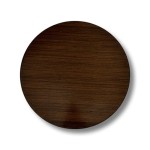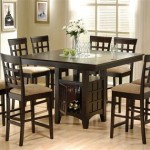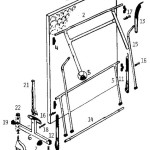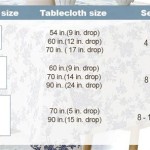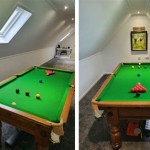```html
How High Should a Cutting Table Be Hung on a Bed?
Determining the appropriate height for hanging a cutting table on a bed frame involves a careful consideration of ergonomics, user comfort, and the intended purpose of the table. A cutting table, often used by crafters, sewists, and hobbyists, provides a dedicated workspace that can be particularly advantageous in smaller living spaces. Hanging it from a bed frame offers a space-saving solution, but achieving the correct height is crucial for preventing strain and maximizing efficiency.
The absence of a universally standardized height means the optimal placement is subjective and dependent on individual factors. However, general guidelines and principles of good posture can be applied to arrive at a suitable height. Incorrect placement can lead to discomfort, back pain, and reduced productivity. This article provides detailed information regarding the factors influencing the ideal height and offers practical advice for installation.
Understanding Ergonomic Principles for Cutting Table Height
Ergonomics plays a vital role in determining the appropriate height for a cutting table. Ergonomics, in this context, refers to designing the workspace to fit the user, minimizing physical strain and maximizing comfort. The primary goal is to maintain a neutral posture, which means keeping the spine aligned and avoiding excessive bending, reaching, or hunching. Neutral posture reduces stress on joints and muscles, preventing fatigue and potential injuries.
When standing at a cutting table, the ideal height allows the user to work with their elbows bent at approximately 90 degrees. The forearms should be parallel to the floor, and the shoulders should be relaxed. This posture minimizes strain on the back, neck, and shoulders. A table that is too low forces the user to bend over, leading to back pain and discomfort. Conversely, a table that is too high requires the user to raise their shoulders, which can cause neck and shoulder tension.
To determine the ideal height, a simple test can be conducted. Stand upright and allow the arms to hang naturally at the sides. Bend the elbows to 90 degrees. The distance from the floor to the bent elbows represents the approximate ideal height for the cutting surface. This measurement serves as a starting point, and minor adjustments can be made based on personal preference and specific tasks.
Furthermore, the type of cutting being performed influences the optimal height. Detailed, intricate work requiring close visual attention may benefit from a slightly higher table, allowing for better visibility. Conversely, cutting thicker materials or applying significant pressure may be more comfortable at a slightly lower height, providing more leverage.
Factors Influencing Cutting Table Height on a Bed Frame
Several factors contribute to determining the optimal height for a cutting table when hung on a bed frame. The height of the bed frame itself is a primary consideration. The distance between the floor and the bottom of the bed frame dictates the available space for the cutting table. If the bed frame is low, the cutting table may need to be positioned higher to achieve the desired ergonomic height. Conversely, a high bed frame may allow for a lower table placement.
The thickness of the mattress also plays a role. A thicker mattress raises the overall height of the bed, potentially affecting the user's reach when seated on the bed. If the user intends to use the cutting table while seated, the table height should be adjusted accordingly to ensure comfortable reach and visibility. The height of the chair or stool used for seated work also becomes a relevant factor in this assessment.
The hanging mechanism and its adjustability are crucial considerations. The method used to suspend the cutting table from the bed frame directly impacts the height and stability of the table. Adjustable hanging brackets or chains allow for fine-tuning the height to achieve the perfect ergonomic position. Non-adjustable mechanisms, on the other hand, require precise measurement and installation to ensure the desired height is achieved.
The intended use of the cutting table influences the ideal height. If the table is primarily used for standing work, the height should be determined based on the ergonomic principles for standing. If it is primarily used for seated work, the height should be adjusted accordingly. If the table is intended for both standing and seated work, a compromise height may be necessary, or an adjustable mechanism can be employed to allow for easy height adjustments.
Practical Considerations for Installation and Adjustments
Before installing a cutting table on a bed frame, careful planning and measurement are essential. Begin by determining the desired height based on the ergonomic principles and individual preferences. Measure the distance from the floor to the desired tabletop height. Account for the thickness of the tabletop itself and any support structures that impact the final height.
Select a suitable hanging mechanism that is capable of supporting the weight of the cutting table and any materials that will be placed on it. Ensure the mechanism is securely attached to both the bed frame and the cutting table. Consider using heavy-duty brackets, chains, or ropes that are designed for weight-bearing applications. Distribute the weight evenly across the hanging mechanism to prevent stress points and ensure stability.
If using adjustable hanging brackets or chains, allow for some flexibility in the initial installation. Install the brackets at a slightly higher position than initially estimated. This provides the opportunity to lower the table if necessary to achieve the ideal height. Fine-tuning the height is often required after the initial installation to account for minor variations and ensure optimal comfort.
Regularly inspect the hanging mechanism for signs of wear or damage. Tighten any loose connections and replace any worn components. Ensure the cutting table remains level and stable. Shifting or wobbling can indicate a problem with the hanging mechanism and may require adjustments or repairs. A stable and secure cutting table promotes safety and efficiency.
Consider adding a back support or leg extensions to the cutting table if it is not inherently stable when suspended. These additions can provide extra support and prevent the table from swaying or tilting. The addition of a back support that rests against the bed frame can significantly increase stability. Leg extensions that reach the floor can provide a solid foundation and prevent the table from shifting.
Finally, evaluate the lighting conditions surrounding the cutting table. Adequate lighting is crucial for accurate and comfortable work. Consider adding a task lamp or adjustable lighting fixture to provide focused illumination on the work surface. Proper lighting reduces eye strain and improves visibility, enhancing the overall working experience.
```
Diy Hanging Bed Jenna Sue Design

At What Height Should Shelves Be Hung A Room By Guide

At What Height Should Shelves Be Hung A Room By Guide

At What Height Should Shelves Be Hung A Room By Guide

How To Build Easy Diy Nightstands Young House Love

At What Height Should Shelves Be Hung A Room By Guide

Small Bedroom Ideas How To Maximize A Tiny Space Reviews By Wirecutter

The Best Cutting Boards Of 2024 Reviews By Wirecutter

The 9 Best Modern Bed Frames Of 2024 Reviews By Wirecutter

Kylie M Interiors The Right Height To Hang Artwork

